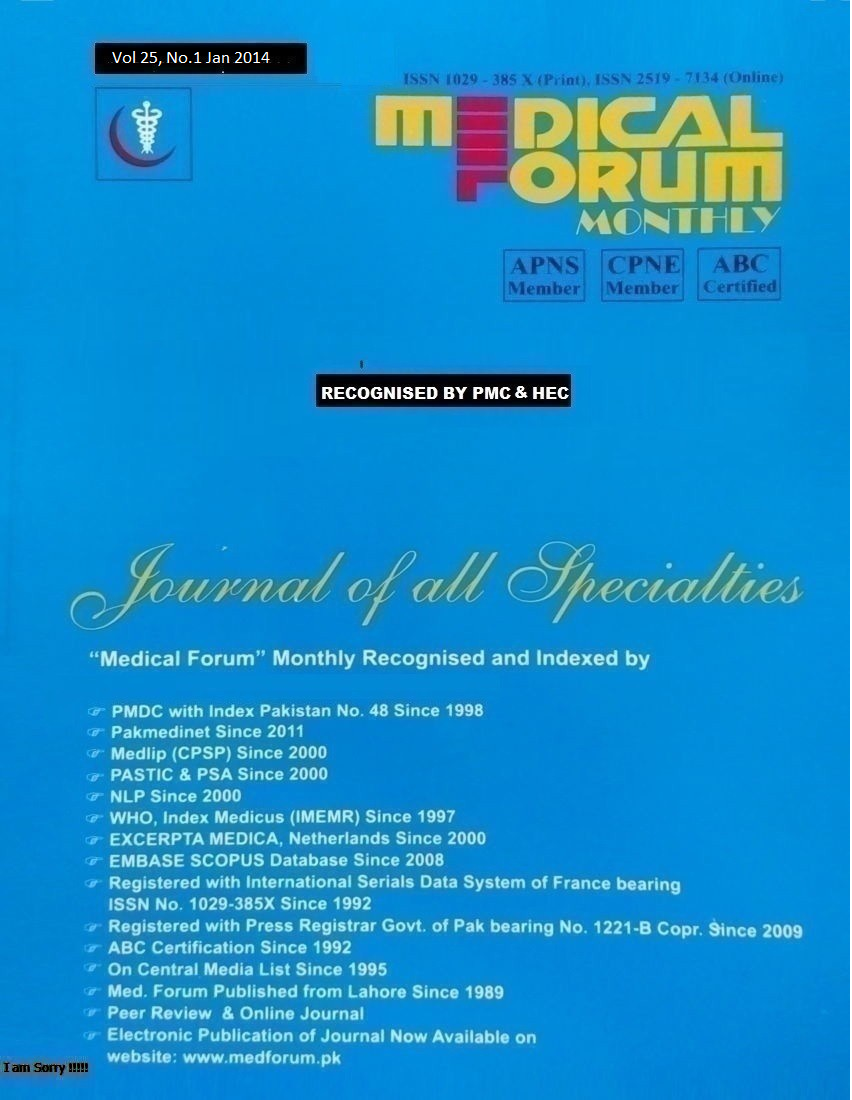
6. Alterations in Mitochondria of Kidney Tubules by Different Doses of Diclofenac Sodium in Rabbits
1. Talat Yasmeen 2. Irfan Ashraf Siddiqui 3. Zaheer Amjad 4. Amir Ali Shoro 5. Talat Mirza
1. Prof. of Anatomy, JSMU, Karachi 2. Asstt. Prof. of Anatomy, JSMU, Karachi 3. Senior Demonstrator Anatomy,
DUHS, Karachi 4. Prof. of Anatomy, LNMC, Karachi 5. Prof. of Pathology, DUHS, Karachi
ABSTRACT
Introduction: Diclofenac sodium, a Non-Steroidal anti-inflammatory agent (NSAIDs), is being prescribed since many decades for the treatment of rheumatic diseases as well as for the relief of pain and fever. It is the inhibitor of enzyme cyclooxygenase. Unfortunately its use is often accompanied by gastro-intestinal renal and hepatic side effects. Renal dysfunction is characterized from acute renal failure to chronic injury. We herein report the damaging effect of diclofenac sodium on the ultrastructure of PCT of rabbit kidney by increasing the doses above the recommended.
Study Design: Experimental Study
Place and Duration of Study: This study was conducted at the Institute of Basic Medical Sciences (IBMS), Dow University of Health Sciences from March 2009 to March 2010.
 Material and methods: In this study 88 male albino rats were selected, they were divided into 4 groups group A received normal saline 2 ml/kg, group B diclofenac sodium 2mg/kg body weight group C 4 mg/kg and group D 6 mg/kg for two weeks. At the end of experiment animals were sacrificed, dissected, kidneys were identified, fixed in 4% gluterldehyde than 1% osmium tetraoxide and passed through graded alcohols, infiltrated and embedded in resins. Semithin 3~4 µm sections were stained with toluidine, ultrathin (1µm) with uranyle acetate. Tissue sections were observed under transmission electron microscope. Tissue changes were graded as 0, +, ++ and +++, no change, mild moderate and severe changes respectively. The results were then analyzed statistically.
Material and methods: In this study 88 male albino rats were selected, they were divided into 4 groups group A received normal saline 2 ml/kg, group B diclofenac sodium 2mg/kg body weight group C 4 mg/kg and group D 6 mg/kg for two weeks. At the end of experiment animals were sacrificed, dissected, kidneys were identified, fixed in 4% gluterldehyde than 1% osmium tetraoxide and passed through graded alcohols, infiltrated and embedded in resins. Semithin 3~4 µm sections were stained with toluidine, ultrathin (1µm) with uranyle acetate. Tissue sections were observed under transmission electron microscope. Tissue changes were graded as 0, +, ++ and +++, no change, mild moderate and severe changes respectively. The results were then analyzed statistically.
Results: There were non-significant changes in the cell organelles of PCT in group A and B, while significant changes were observed in group C and highly significant in group D.
Conclusion: Diclofenac sodium has damaging effect on the mitochondria of PCT cells far before the light microscopic changes. So its use should be restricted only in very painful conditions. Secondly in case of prolong treatment follow up with regular renal function test should be carried out.
Key Words: Diclofenac sodium, kidney, ultrastructure.
